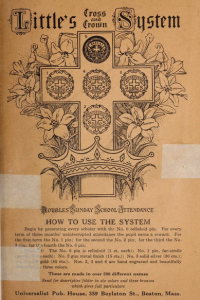If you’ve worked in a office long enough, it’s even odds that you’ve found yourself in an online or video-conferenced training. I’ve taken them, participated in testing them and have secured the vendors for hosting them. The appeal is obvious: it saves money. The presenter doesn’t have to hire a meeting space, so registration fees can be lower. No travel costs, or lost salary in travel time. The hallway interactions are lost, and I don’t think I could stay conscious past the two hour mark — but it’s a useful tool that I’d like to see used more in church-related trainings.
But however cheap it can be to host, it’s probably still more than true bootstrappers or individuals would want to pay. And cheap is relative: with enough participants, with a reliable vendor and a long-enough training, it can run into hundreds of dollars. But what if you don’t want all the bells and whistles, say a hosted recording of the event?
Let’s try to drive the cost to zero. The way to do it is to hack together the services. In a commercial online training, you would login to a service through your computer browser, and get the audio by calling in to a conference line.
Replace the call-in line with Skype, and the call is free. The downside is everyone would have to have a Skype account. (I don’t like promoting proprietary software, and there may be other options, but Skype has been well-adopted.) Something with Twilio would be cheap and fun, too. And there are other options, but these often mean a long-distance call for participants.
But what about the video? For now, I’m thinking slides. Live, interactive video is beyond me right now for more than the smallest groups (in which case continue to use Skype), and not everything needs video. Perhaps if I was teaching you how to use software, but not with, say, church history. (And if I wanted to simply show a video, I’d use YouTube.)
Instead of using PowerPoint and the like, what about the web? You know, that thing you’re looking at right now. If you’re well past 30 years old, this may make sense; younger people, use your imagination. Back in grade school, we had filmstrips. A slide at a time, projected on a wall, with narration on cassette tape. Some fancy filmstrip machine automatically moved from one picture to the next, but they didn’t work very well. The simpler and more common technology was place a tone — beep! — in the narration to indicate that the film should be advanced and the next slide seen. (Here’s a YouTube video of a real filmstrip with new comic narration.) Beep!
The underused and under-appreciated S5 system lets you host slideshows on the web to be seen through a browser. See this S5 introductory slideshow. Use your left and right arrows to flip through the slides. And the good news it this format is in the public domain and relatively easy to create. (This was the presentation standard I mentioned last week.)
Screencast software should allow the presenter to record the narration and his or her own use of the slides, for recording.
So I’d point people to a hosted S5 presentation, have people call into a conference, and give audio cues to let people guide themselves through the presentation. You don’t even have to beep.
 Another advertisement from the 1912 Universalist Register was for the “Cross and Crown” system of pins and accessories, to award Sunday School participation. You still see these for sale in old-fashioned church supply stores, but while there used to be named versions for all major denominations, you hardly see any other than Baptists today; the generic “attendance” variety prevail today. And they’re not nearly so refined as the one I saw some years ago: the treasured possessions of elder Universalists, kept from childhood.
Another advertisement from the 1912 Universalist Register was for the “Cross and Crown” system of pins and accessories, to award Sunday School participation. You still see these for sale in old-fashioned church supply stores, but while there used to be named versions for all major denominations, you hardly see any other than Baptists today; the generic “attendance” variety prevail today. And they’re not nearly so refined as the one I saw some years ago: the treasured possessions of elder Universalists, kept from childhood. 


